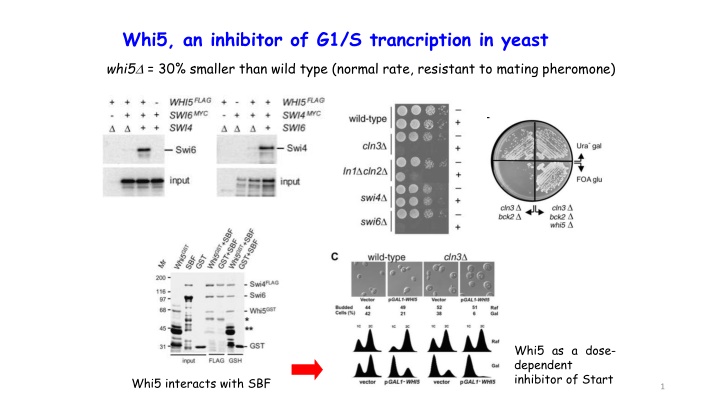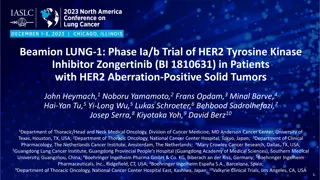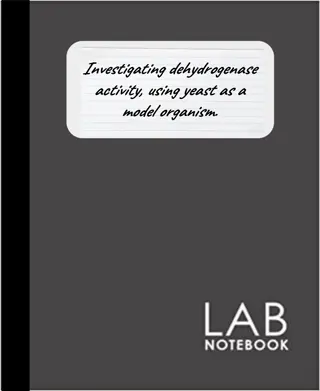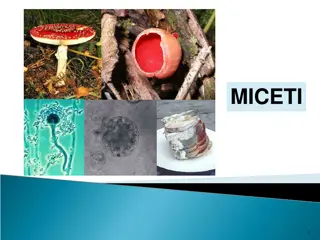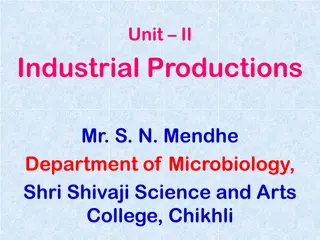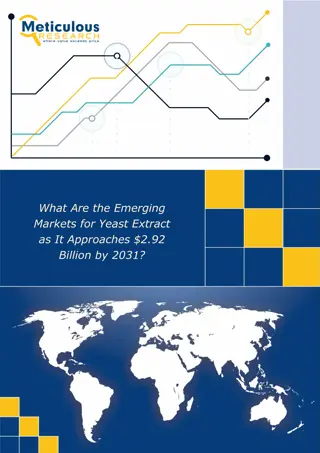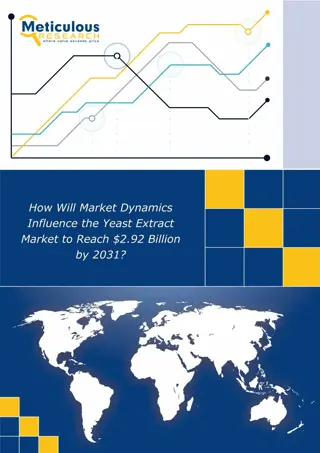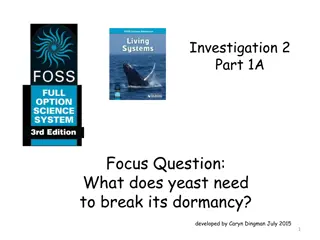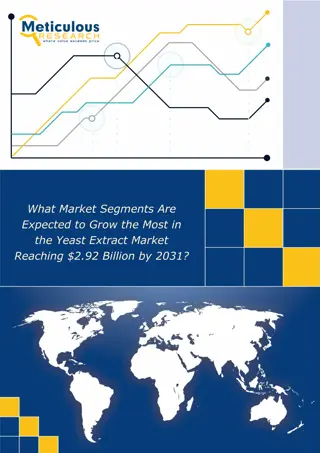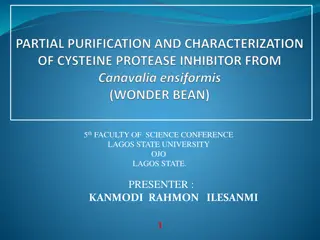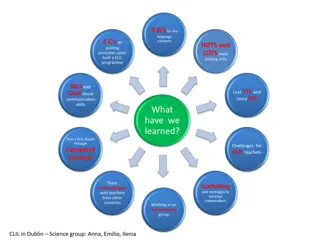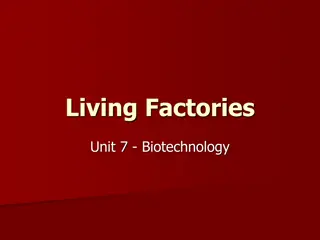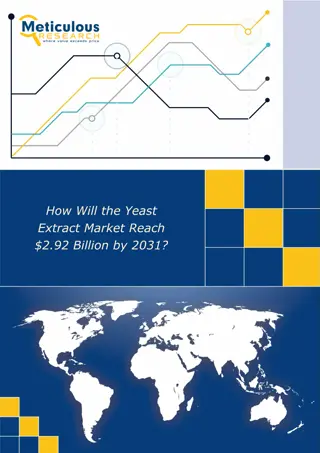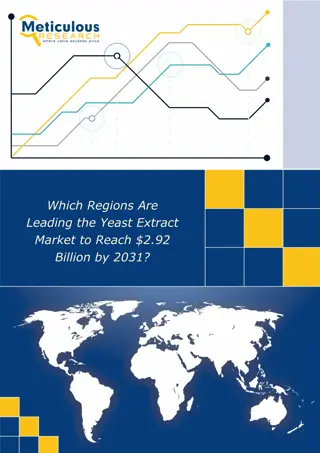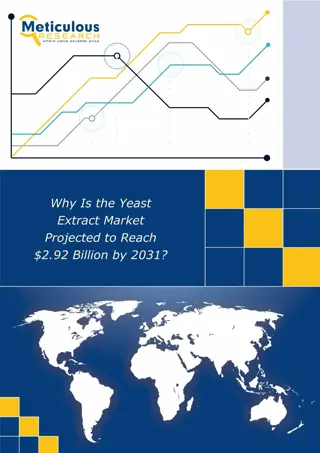Whi5, an inhibitor of G1/S trancription in yeast
Whi5, an inhibitor of G1/S transcription in yeast, interacts with SBF to regulate SBF-dependent genes and affect the G1/S transition onset. Its phosphorylation by Cln-CdK complexes modulates its function in the cell cycle. Explore the role of Whi5 in nuclear localization and its association with Cdc28 activity, shedding light on its dose-dependent inhibition of Start and contribution to cell cycle regulation through physical interactions with Cdc28 activity.
Download Presentation

Please find below an Image/Link to download the presentation.
The content on the website is provided AS IS for your information and personal use only. It may not be sold, licensed, or shared on other websites without obtaining consent from the author.If you encounter any issues during the download, it is possible that the publisher has removed the file from their server.
You are allowed to download the files provided on this website for personal or commercial use, subject to the condition that they are used lawfully. All files are the property of their respective owners.
The content on the website is provided AS IS for your information and personal use only. It may not be sold, licensed, or shared on other websites without obtaining consent from the author.
E N D
Presentation Transcript
Whi5, an inhibitor of G1/S trancription in yeast whi5 = 30% smaller than wild type (normal rate, resistant to mating pheromone) Whi5 as a dose- dependent inhibitor of Start Whi5 interacts with SBF 1
Whi5 regulates SBF-dependent genes Whi5 affects onset of G1/S transition 2
Whi5 nuclear localization Whi5 is not cell cycle regulated Whi5 is in the nucleus of cells arrested in G1 by pheromone or in nutrient depleted cells (lack of Cdk activity) Whi5 is exported from the mother cell nucleus 20 before bud emergence (as in d. cells). 3
Whi5 is phosphorylated by Cln-CdK complexes To determine if Whi5 is physically associated with Cdc28 activity, Whi5FLAG immune-complexes isolated from wild-type and cdc28-4ts strains was incubated with [32P]- -ATP and resolved the reaction products by SDS- PAGE. 4
CDK kinase activity is able to modulate the composition of recombinant Whi5-SBF complexes 1) Soluble Whi5-GST produced in bacteria was pre-bound to insect cell-produced Swi4FLAG-Swi6 complex on anti-FLAG resin and incubated with Cln2-Cdc28 in the presence of ATP or ADP 2) After washing, proteins in the bound (B) and supernatant (S) fractions were identified by immunoblot 3) Phosphorylation caused approximately 50% of the SBF bound Whi5 to be released. 5
The inhibitor Whi5 Wagner et al., Plos One 2009 Whi5 is phosphorylated on 16 sites in vivo, 12 of which are CDK target sites CDK sites 8,9,10 and 12 are both necessary and sufficient for viability in combination with Swi6- 4Ala De Bruin et al., Cell 2004 6
SBF and MBF Mbp1 Swi4 Swi6 Swi6 SBF MBF CLN1, CLN2 promoters: SCB element (CACGAAA, Swi4/Swi6 Cell cycle Box) CLB5, CLB6 promoters: MCB element (ACGCGTNA, Mbp1/Swi6 Cell cycle Box) 7
Transcriptional regulation of cyclins The transcription repressor Whi5 inhibits the activity of the SBF transcription factor. Phosphorylation of Whi5 by Cln3 Cdc28 induces the nuclear export of Whi5 and activates SBF which induce the transcription of the genes that encode Cln1, Cln2. 8
Traversal of Start is driven by CDK activity, which can be measured in live cells via the CDK-dependent nuclear export of the transcriptional inhibitor Whi5. Start corresponds precisely to the abrupt activation of the G1 cyclin-positive feedback loop, which occurs when about 50% of a cell s Whi5 has left the nucleus. Recent studies using single-cell time-lapse imaging of cycling normal human fibroblasts concluded that the mammalian restriction point occurs 4 6 hours before significantly detectable Rb phosphorylation. 9
A positive feedback switch ensures commitment The genes encoding the G1 cyclins CLN1 and CLN2 in yeast and cyclin E in mammals are some of the first G1 S genes to be transcribed. Through positive feedback, G1 cyclins increase their own produce a rapid increase in cyclin CDK activity transcription to In addition to defining the point at which cells commit, the rapid increase in CDK activity driven by this positive feedback results in the timely and coherent activation of the entire G1 S Then a positive feedback switch ensures cell cycle commitment. Bertoli et al 2013 10
Retinoblastoma (Rb) Tumor Suppressor Gene Retinoblastoma is an eye cancer, the most common in children, and develops from retinal cells. During the early stages of eye development, the precursors of retinal cells, called retinoblasts, begin to multiply and generate the cells that will make up the mature retina If retinoblasts continue to multiply out of control and without maturing, they give rise to a retinoblastoma. 12
